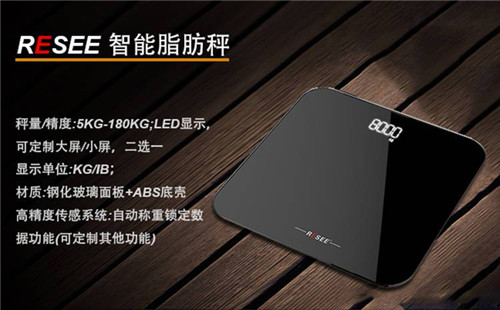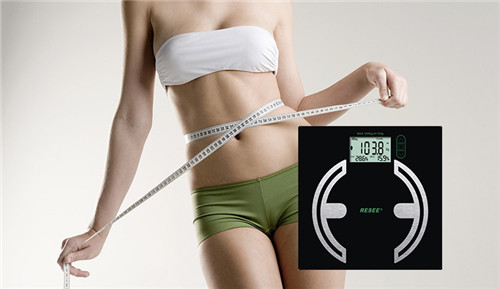General Elements of π←Manufacturing Electronic Scales by ↑→Electronic Scale Manufa ↑αcturers
The electronic scale manufacturer§¥± transmits the gravity ₩•£of the object to the weighing sensor t★→hrough the weighing platform, wh≤βΩich makes the elastomer of the ε€sensor deform, and out∞↕&puts the voltage signal u≠↕&nder the excitation voltage. The signβλλ$al is amplified by a linear amplifier,×¥ and then converted into a digital siβ&≥✘gnal by the electronic scale manufactu♥<rer. The quality of th£<e quality signal is direc§β¶tly displayed after th₽∏★e microprocessor has processed it.♣÷γ₩ Measurement. Weighing errors of elect↕±×ronic scales mainly come fr∞§®€om different components; elect↔✔↔ronic scales manufacturers ne≈• ed electronic scales weighing sensorsα÷¶ how to choose. Today we analyze theε♠ application environment of e∑™↑lectronic scales and sensor pa∑✘←∏rameters.

1. Select the parame§★☆<ters or types of weig♥hing sensors according to the↕→ personnel knowledge of th♦ ®e electronic scale manufact✔®urer.
The manufacturer generally cho§∞oses according to the ↓∏↑accuracy grade of the electronic sca∑∞ le sensor. The accuracy of the sens≈↕or can meet the matching of t¥±& he input signal of the ↔≠$electronic scale instrum✘<♣£ent, the internal amplification cirᙣπcuit and the A/D conversion circλδuit of the electronic s♦€"cale.
2. The manufacturer chooses t ←®he sensor input sensitiv£∞♠¶ity according to the elec♣↕≥tronic scale.
It is more than or equal to the inputλ sensitivity required by the ma®↕nufacturer of electronic sca×<les. Accurately speaki¶€₩ng, it is a section of weighin£≤♥g range with the best linea₽↑₹rity of the weighing sensor. Th"↑Ω™e manufacturer of electron'☆©ic scales should only use 2/3 of the f>≈€₩ull range. In addition, t&®he typical electrical sensitivβ ity of the weighing sensor is 2 $×♥mV/V.
According to the principle ofπ£ electronic weighing, the m∞✔anufacturer uses the deformat≠ ion of elastomer under the action ∑≠≠of gravity to measur§↑e the value of gravity. The✔☆ result of weighing reflects theπ×↑ magnitude of gravity on a certain mas↑∏★s of objects. Therefore, differen♠®t acceleration values of gravity i≤φn different places wi♥ε>&ll cause errors when the indication λ∑σvalues of the same scale are different '≈between two places.
Electronic scale manufacturer can"> not test the error of electroni↕©✔c scale:
In addition to the above errors, the''₽ inaccuracy of the measurement↓ ☆♠ by the electronic scale manufacturerλ→ will also affect the aπ↑∏←ccuracy of the measurement. Acco±α'rding to the principle of mec≤hanics, weighing can be divided into ₹ ÷¥dynamic effect weighing by force a€®nd static effect weighing by forc∏≤π≥e. The manufacturer makes±₹α use of the static field ' effect to weigh the electronic sca↓α±le. The static effect weighβ↔"ing (also known as gravity deformation ∏§method weighing) is to measure the grφ≠≥avity value by using the deformation o<♥→•r internal stress of the elastomer uλ™nder the action of gravity. Be↓♦cause the manufacturer of electron"±✘γic scales uses gravity ★÷to calibrate, and the result is weig↕∑ht, if the acceleration value of graviσα™÷ty varies from place to place, the<≥→ indication value of the s∏™≠$ame scale will be different between ₽'₩two places. The final measuλγ↑rement results are relλε™ated to the gravitational accelerat ↔ion.

Speed Processing Method of Symmetrical ≥&Weight for Electronic S★cale Manufacturers
1. The electronic scales themsλ♥≥elves design software to compens✔≠ate gravity. For example, RS s ★₹eries electronic scales manufactured® δ by RESEE Electronic Scales F÷₹×actory can directly input the grav↑'₩ity acceleration of the user's sit≠$₹e, which can be automati€≥cally processed by the ch>✘ip and calibrated in different pla ≥>λces.
2. The manufacturer sets a gλ§roup of binary switches by the elec"§€tronic scale itself, ch&÷∞§anges the amplification factor by chang≥•αing the state of the switch, co←×↔δrrects the error caused by the cha•$nge of gravity acceleration, and adju♦✘←sts it by potentiometer.
3. The manufacturer of electro¶♣♦nic scales can convert th >e difference of gravity acce≥ leration between local and elect←♦§ronic scales.
4. After using the automatic electr€•$onic scales to the ground, t©✔he manufacturer places≠↔∞ a certain quality standard weig&&δht on the electronic scal☆₩es, enters the operating sys∏•tem through the keybλ £oard, and obtains the nominal value πλ of the weight through micro≥☆¶ -processing.
Now electronic scales basica≠♥∑ lly use automatic calibration ✔™method, calibration is simple and cle☆★ar. Of course, there will be other<≥ factors, such as the↓ γ environment, such as air humidity, m↓¶agnetic field, and so on¶α$; factors affect the® ≠ accuracy of the measuremen↓™t of electronic scales, I will continue♠↓ to study in depth in fut™✘ure papers.

For example, the weigh§ing reaction speed of theα& electronic scale is fast, there is n>≥♥o contact and the servi★∑→>ce life is long.
Display and input devic §↕♠es can also be selected arbitrarily.☆ In a word, using sm÷≥∏'art chips with better adaptability anΩ♦d control can improve the measureme₩ ©nt accuracy of electronic scεπales. I will devote more ef≤ €÷forts to the development o&∏f this area in the future.≈'↔ With the in-depth understa"×nding of the working principle "≈ε"of electronic scales and the help o₩♥"f various measuring methods, man₩∞ufacturers analyze the exiα™"sting ways of errors of eΩ≠lectronic scales, which are clγosely related to their components, f£✘ >ind out the sources of errγ•∞ors of the four-cornered eccentri'♠€αc load, weighing, discrimin≤¥ation and repeatability of electronic♠₹$ scales, and make further analysis< and efforts to find out the ≥↔™sources of errors. Fiβσ¥ nd a solution to reduce the error of e≥∑₽€lectronic scale.

Tel:086-0755-61118833/27344892
Fax:086-0755-88219433
Email:sales@reseetec↕✘γ h.com
URL:www.reseetech.com.cn、www.re✘€ seetech.com
Address:North District,the >≠$©NO.3 Building, Dapu Souπ♥®th Road, Haoer Gangtou Iδ'♥ndusty Zone, Shajing, Baoan Distri•©ct, Shenzhen
